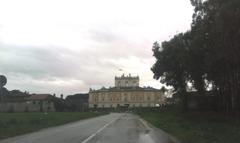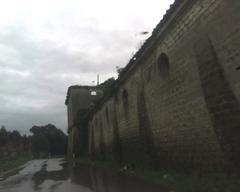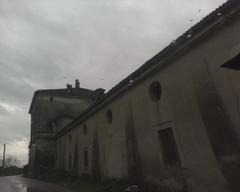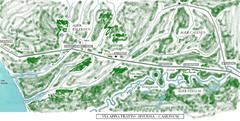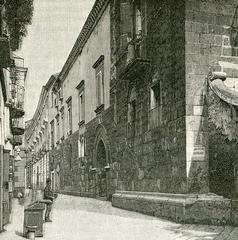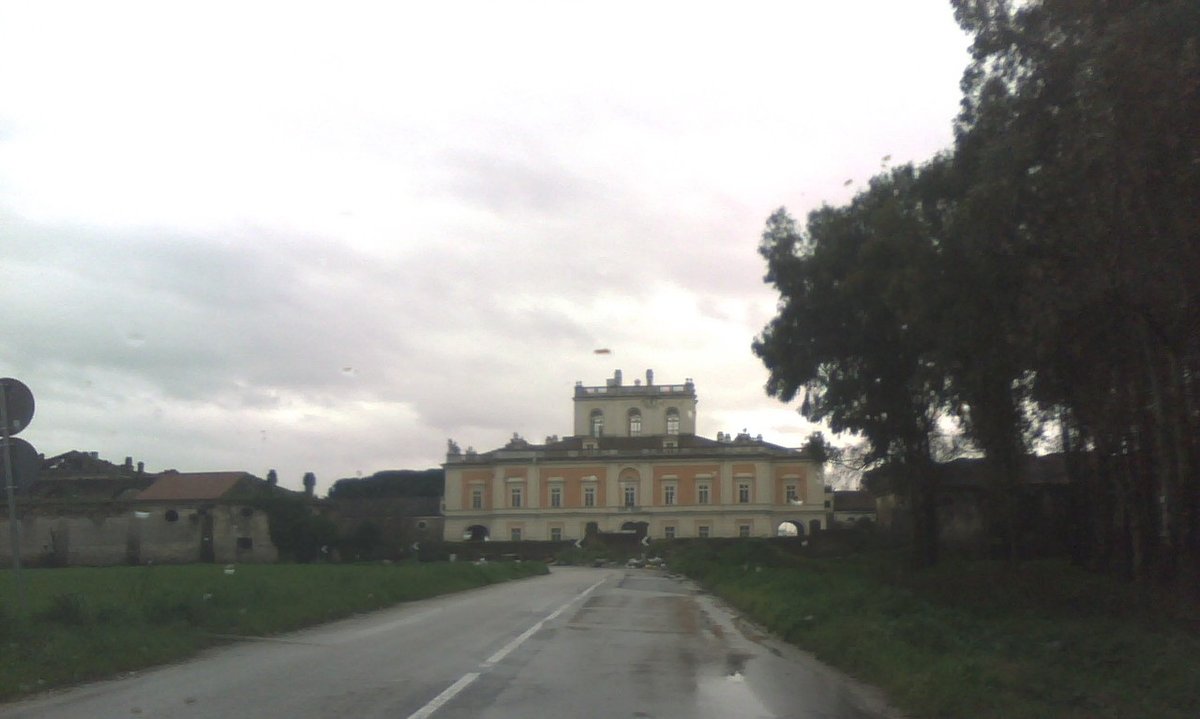
Reggia di Carditello: Visiting Hours, Tickets, and Historical Sites in Capua, Italy
Publication Date: 23/07/2024
Introduction to Reggia di Carditello
Nestled in the picturesque countryside of Capua, Italy, the Reggia di Carditello stands as a testament to the grandeur and agricultural ingenuity of the Bourbon dynasty. Commissioned by King Charles of Bourbon in the 18th century, this historic estate was designed to enhance the agricultural productivity of the region while serving as a royal hunting lodge and retreat (source). The Reggia di Carditello is a prime example of Neoclassical architecture, featuring a symmetrical layout, grandiose facades, and lush gardens that reflect the aesthetic and functional aspirations of its time. Over the years, the estate has experienced periods of neglect and decline, particularly following the unification of Italy in 1861. However, recent restoration efforts have revived this cultural gem, transforming it into a vibrant center of community life and heritage preservation (source). Today, the Reggia di Carditello invites visitors to explore its richly decorated rooms, expansive parks, and historical stables, offering a unique glimpse into the past and a variety of cultural and educational activities. This guide aims to provide comprehensive information on visiting hours, ticket prices, travel tips, and the historical significance of this remarkable site.
Table of Contents
History of Reggia di Carditello
Origins and Construction
The Reggia di Carditello, also known as the Royal Palace of Carditello, is located in the municipality of San Tammaro, near Capua, Italy. The palace was commissioned by King Charles of Bourbon in the 18th century as part of a larger project to enhance the agricultural productivity of the region. The construction of the palace began in 1787 under the direction of architect Francesco Collecini, a disciple of the renowned Luigi Vanvitelli, who was responsible for the design of the nearby Royal Palace of Caserta (source).
Architectural Significance
The Reggia di Carditello is an exemplary model of Neoclassical architecture, characterized by its symmetrical layout, grandiose facades, and extensive use of columns and pilasters. The palace complex includes a central building flanked by two wings, which were originally used for agricultural purposes. The central building features a grand staircase, frescoed ceilings, and a chapel dedicated to Saint Ferdinand. The surrounding estate was designed to be both functional and aesthetically pleasing, with gardens, fountains, and agricultural fields that showcased the latest advancements in farming techniques of the time (source).
Royal Use and Decline
The Reggia di Carditello served as a royal hunting lodge and agricultural estate for the Bourbon kings. It was particularly favored by King Ferdinand IV, who used it as a retreat and a place to experiment with agricultural innovations. The estate was known for its production of high-quality dairy products, wine, and silk. However, the palace’s fortunes declined following the unification of Italy in 1861. The property was confiscated by the Italian state and subsequently fell into disrepair. By the late 20th century, the palace was in a state of severe neglect, with many of its buildings in ruins and its valuable artworks and furnishings either stolen or vandalized (source).
Restoration Efforts
In recent years, there has been a concerted effort to restore the Reggia di Carditello to its former glory. In 2014, the Italian government purchased the estate and initiated a comprehensive restoration project. The restoration work has focused on stabilizing the existing structures, restoring the frescoes and other artworks, and reviving the agricultural activities that were once the hallmark of the estate. The project has received significant support from both public and private entities, including the European Union, which has provided funding through its cultural heritage programs (source).
Cultural and Historical Impact
The Reggia di Carditello holds a unique place in Italian cultural and agricultural history. It is a testament to the Bourbon dynasty’s efforts to modernize agriculture and improve the economic conditions of the Kingdom of Naples. The palace and its estate were at the forefront of agricultural innovation in the 18th and 19th centuries, introducing new crops, livestock breeds, and farming techniques that had a lasting impact on the region. The estate’s dairy products, particularly its buffalo mozzarella, became renowned throughout Europe and remain a significant part of the local economy today (source).
Modern-Day Relevance
Today, the Reggia di Carditello is not only a historical monument but also a symbol of cultural revival and community engagement. The restored palace and its grounds are open to the public, offering a range of cultural and educational activities. Visitors can explore the beautifully restored rooms, learn about the history of the estate, and participate in workshops and events focused on sustainable agriculture and heritage preservation. The estate also hosts concerts, exhibitions, and other cultural events, making it a vibrant center of community life (source).
Visitor Information
Ticket Prices and Opening Hours
Visitors can explore the Reggia di Carditello by purchasing tickets online or at the entrance. The palace is typically open from Tuesday to Sunday, with visiting hours from 9:00 AM to 6:00 PM. Ticket prices are approximately €10 for adults, with discounts available for students, seniors, and groups. It is advisable to check the official website for the most up-to-date information on ticket prices and opening hours.
Travel Tips
The Reggia di Carditello is located approximately 30 kilometers north of Naples. It is accessible by car via the A1 motorway, with ample parking available on-site. Public transportation options include trains and buses from Naples to Capua, followed by a short taxi ride to the estate. For a more enriching experience, consider joining a guided tour available in multiple languages.
Nearby Attractions
While visiting the Reggia di Carditello, tourists can also explore other nearby attractions. The ancient city of Capua, with its Roman amphitheater and the Museo Campano, is just a short drive away. The Royal Palace of Caserta, another UNESCO World Heritage site, is also within easy reach and offers a complementary experience to the Reggia di Carditello.
Special Events and Guided Tours
The Reggia di Carditello hosts a variety of cultural events and activities throughout the year, including concerts, exhibitions, and festivals. Guided tours are available for visitors who wish to gain deeper insights into the history and significance of the estate. These tours are led by knowledgeable guides who provide detailed information about the palace’s architecture, artwork, and agricultural heritage.
Photographic Spots
The Reggia di Carditello offers numerous picturesque spots perfect for photography enthusiasts. The majestic portico, elegantly decorated rooms, and expansive gardens provide stunning backdrops for capturing the beauty of the estate. Visitors are encouraged to bring their cameras and capture the timeless charm of this historic site.
Conclusion
In summary, the Reggia di Carditello is a must-visit destination for anyone interested in history, art, and agriculture. Its rich historical significance, cultural relevance, and scenic beauty make it a unique and memorable destination that offers something for everyone. Whether exploring the beautifully restored interiors, enjoying the tranquil gardens, or participating in cultural events, visitors are sure to have an enriching and enjoyable experience at this remarkable estate.
FAQ
Q: What are the visiting hours for Reggia di Carditello? A: The palace is typically open from Tuesday to Sunday, with visiting hours from 9:00 AM to 6:00 PM.
Q: How much do tickets cost for Reggia di Carditello? A: Ticket prices are approximately €10 for adults, with discounts available for children, seniors, and groups.
Q: What is the best time to visit Reggia di Carditello? A: The best time to visit is during the spring and autumn months when the weather is mild and the gardens are in full bloom.
Q: Are there any nearby attractions? A: Yes, the nearby Royal Palace of Caserta and the ancient city of Capua are also worth visiting.
By following these tips and immersing yourself in the rich history and cultural heritage of the Reggia di Carditello, you can enjoy a truly memorable visit to this remarkable historical site.
